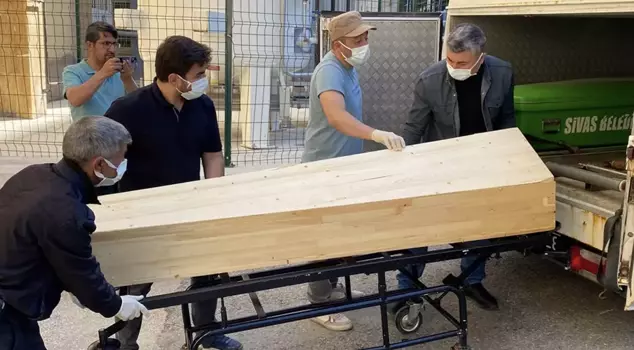
23.05.2025 12:43
A 27-year-old man who was treated for suspected Crimean-Congo Hemorrhagic Fever (CCHF) after being bitten by a tick in Sivas lost his battle for life after 9 days. The number of deaths related to CCHF in the city has risen to 3, while 5 other patients are still receiving treatment in the hospital.
The nightmare of ticks has started again with the rise in air temperatures. The number of people who have died from Crimean-Congo Hemorrhagic Fever (CCHF) in Sivas is increasing every day.
HE REMOVED THE TICK HIMSELF
Oğuzhan Aydemir (27), who lives in the village of Eşmebaşı in the Yıldızeli district of the city and works in livestock farming, became ill shortly after removing a tick that had attached to his body. Aydemir, who went to Sivas Cumhuriyet University Medical Faculty Hospital with complaints of high fever and nausea, was treated in the hospital's infectious diseases department with a suspicion of CCHF.
DIED 9 DAYS LATER
Aydemir, who had been receiving treatment in the hospital for 9 days, passed away this morning. The body of Oğuzhan Aydemir, who was handed over to his relatives from the hospital's morgue, was taken to his village for burial.
THE DEATH TOLL RISES TO 3
This year, 16 patients sought treatment for CCHF at Cumhuriyet University Health Services Application and Research Hospital in Sivas during April and May. 8 patients who completed their treatment were discharged, while 2 people had died. With Aydemir's death, the tragic toll has risen to 3.
WHAT HAPPENED?
M.K., a 48-year-old livestock farmer in the village of Yalnıztepe in Koyulhisar district, had removed a tick that had attached to a large animal with his bare hands about a week ago. It was learned that M.K. had a wound on his hand, and after feeling unwell, he was taken to Koyulhisar District Hospital by his relatives. Diagnosed with CCHF, M.K. was transferred to Cumhuriyet University Health Services Application and Research Hospital for treatment.
In the village of Kalebaşı in the district, 1.5-year-old Metehan Tütüncü was also taken to Reşadiye State Hospital 3 days ago due to a tick bite and had passed away at Tokat State Hospital, where he was transferred, the day before yesterday.
WHAT TO DO WHEN BITTEN BY A TICK?
1. DO NOT TRY TO REMOVE THE TICK YOURSELF
- If the tick is firmly attached to the skin and you cannot remove it, seek medical attention as soon as possible.
- If you are going to remove it, grasp it with tweezers close to the head and pull gently and steadily. Be careful not to crush or burst it.
2. AFTER THE TICK IS REMOVED
- The bitten area should be washed with soap and water and cleaned with antiseptic.
- You may be asked to bring the tick in a container to the healthcare facility.
- Monitor yourself for at least 10 days: if you experience symptoms such as fever, fatigue, muscle pain, or nausea, seek medical attention immediately.
3. THINGS THAT SHOULD NEVER BE DONE
- Applying substances like cologne, cigarettes, or oil to the tick is very risky. This can facilitate the virus entering the bloodstream.
- Playing with or squeezing the tick while it is attached increases the risk of disease transmission.
WHEN SHOULD YOU GO TO THE HOSPITAL?
If symptoms such as fever, headache, muscle pain, joint pain, nausea, vomiting, skin bruising, or nose/eye/stool bleeding develop, you should urgently go to a healthcare institution.
METHODS OF PROTECTING AGAINST TICKS
1. PAY ATTENTION TO CLOTHING IN OPEN AREAS
- In open areas (meadows, pastures, forested areas), the body should be fully covered.
- Pant legs should be tucked into socks, and light-colored clothing should be preferred (ticks are easier to spot on light colors).
- Wearing a hat, long-sleeved shirt, and boots is recommended.
2. PERFORM A TICK CHECK
- After returning from the outdoors, the body should be thoroughly checked.
- Ticks can hide in areas such as the scalp, behind the ears, armpits, waist, and behind the knees.
3. BE CAREFUL WHEN IN CONTACT WITH ANIMALS
- When in contact with animals that may carry ticks (large or small livestock), protective clothing should be worn.
- Gloves and boots should be used during barn cleaning.
CAN CCHF BE TRANSMITTED FROM PERSON TO PERSON?
People who come into contact with the body fluids of a CCHF patient, such as blood, vomit, urine, feces, or saliva, can contract the virus. However, casual contact with the patient (talking, shaking hands) is generally not contagious.